We had breakfast at the hotel. I still wasn’t feeling well and I masked up nearly all the time. The valley was socked in with fog.
We left the hotel at 8:30 and drove to Lao Chai where we were visiting the Black Hmong people. There are four subdivisions of Hmong – white, black, green, and flower; they are all distinguished by their clothing. The Hmong came from China in the 17th century. They live in the hills so their rice paddies are terraced.
They have a different engagement process from the Red Dzao but like them, they also get married very young. The boys and girls meet each other at the market. A boy evaluates the girl based on her looks, her embroidery, and the color of her fingers. They weave hemp (in facts the ladies’ hands were moving all the time, creating the hemp thread) and dye the cloth with indigo which turns their hands greenish blue. So greenish blue hand means the girl is hard working young lady – a vey positive attribute..
After a series of visits in which they express interest in each other the boy kidnaps the girl and takes her to his house for 3 days. During those three days he negotiates a bride price with the girl’s parents (no hanky panky during those three days). After everything is agreed he asks her to marry him and if she say no she has to repay his family double the bride price. They typically get married very quickly after that. Silver is very precious so the ladies get silver earrings and necklaces from their husbands when they get married.
If you enlarge the pictures you might be able to see circles on the ladies foreheads. Those are made from cupping with a goat horn to alleviate a headache. They claim it works.
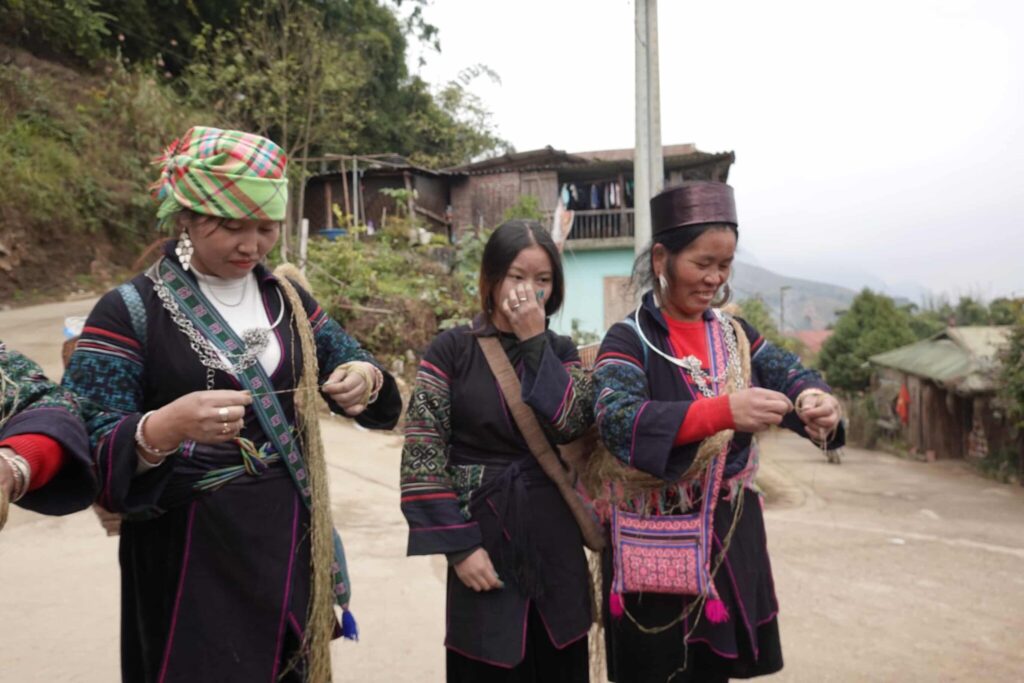
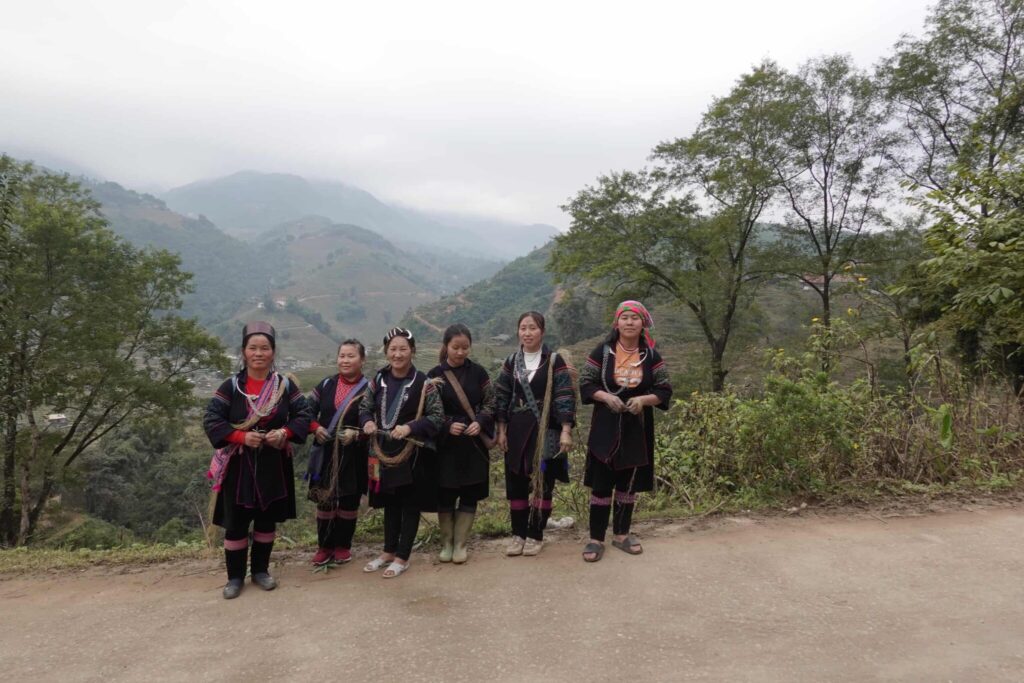
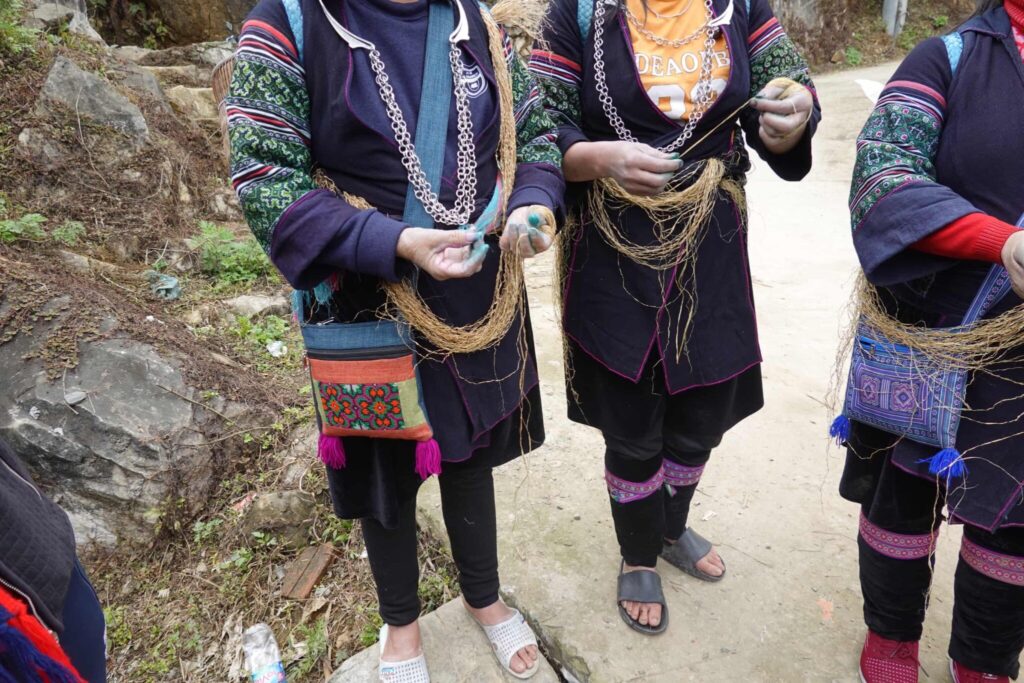
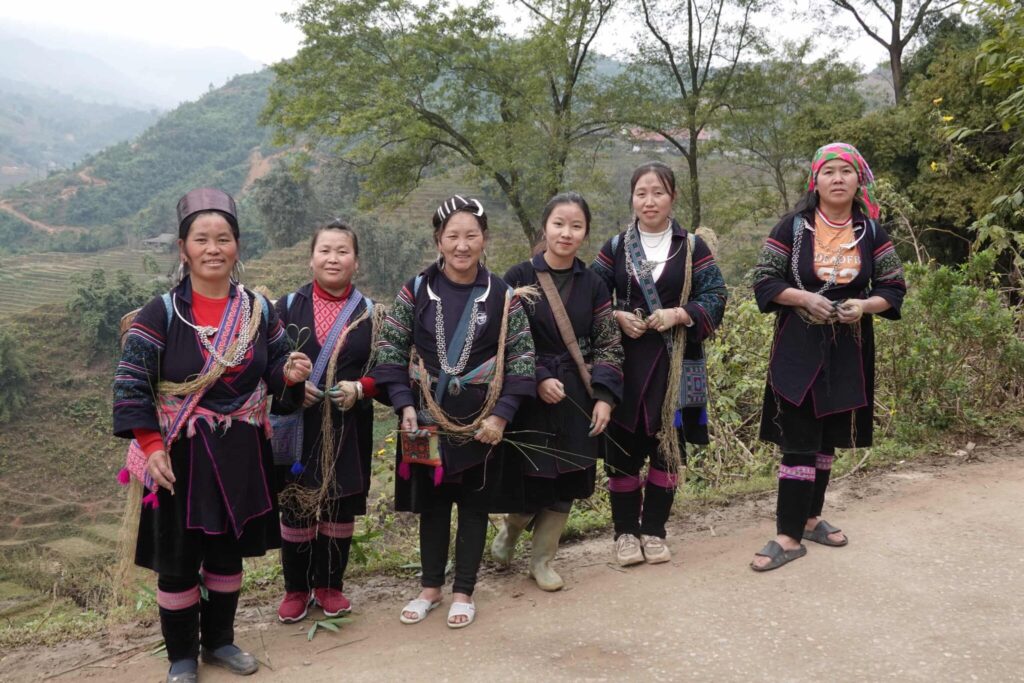
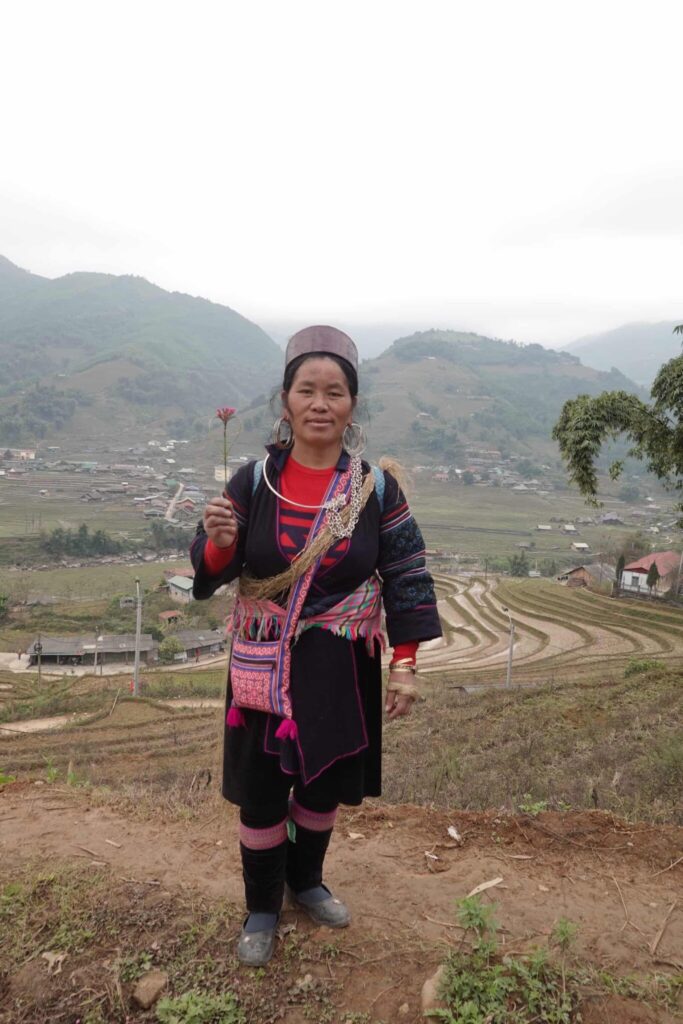

We walked along the village path. May Linh found an indigo plant. She wet the plant, rubbed it between her hands and rubbed it on our hands. You can see the results below.
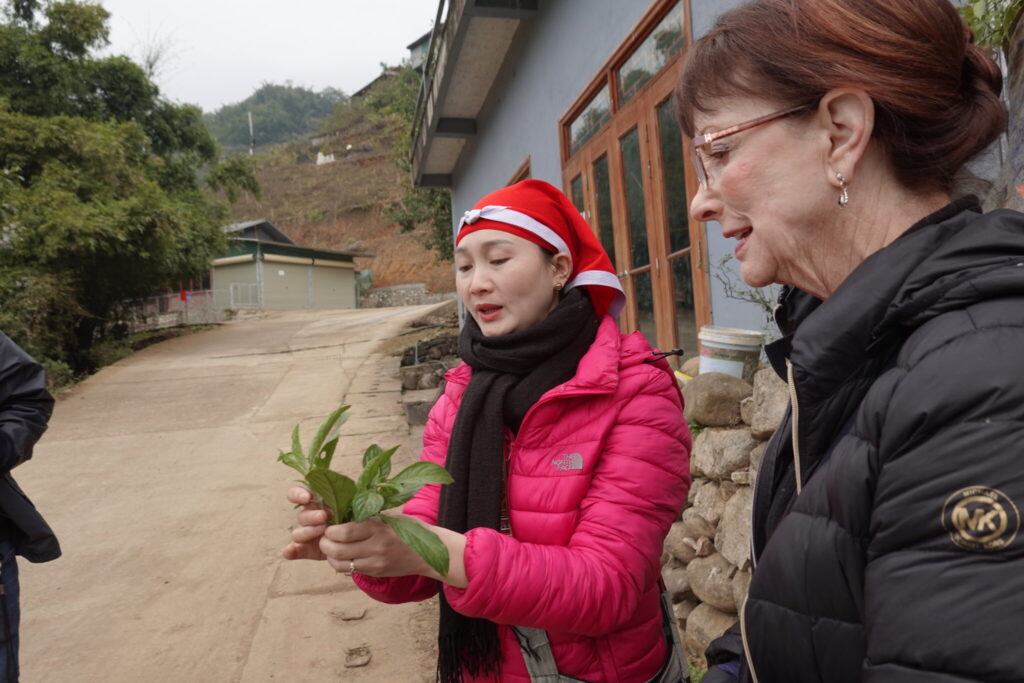
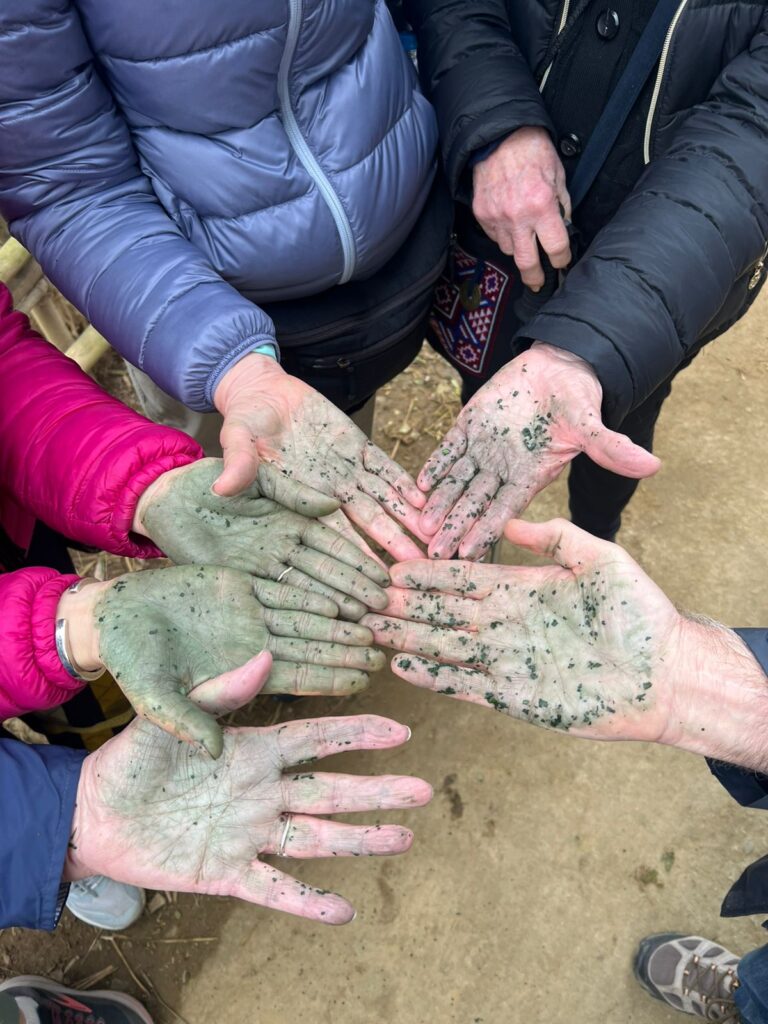
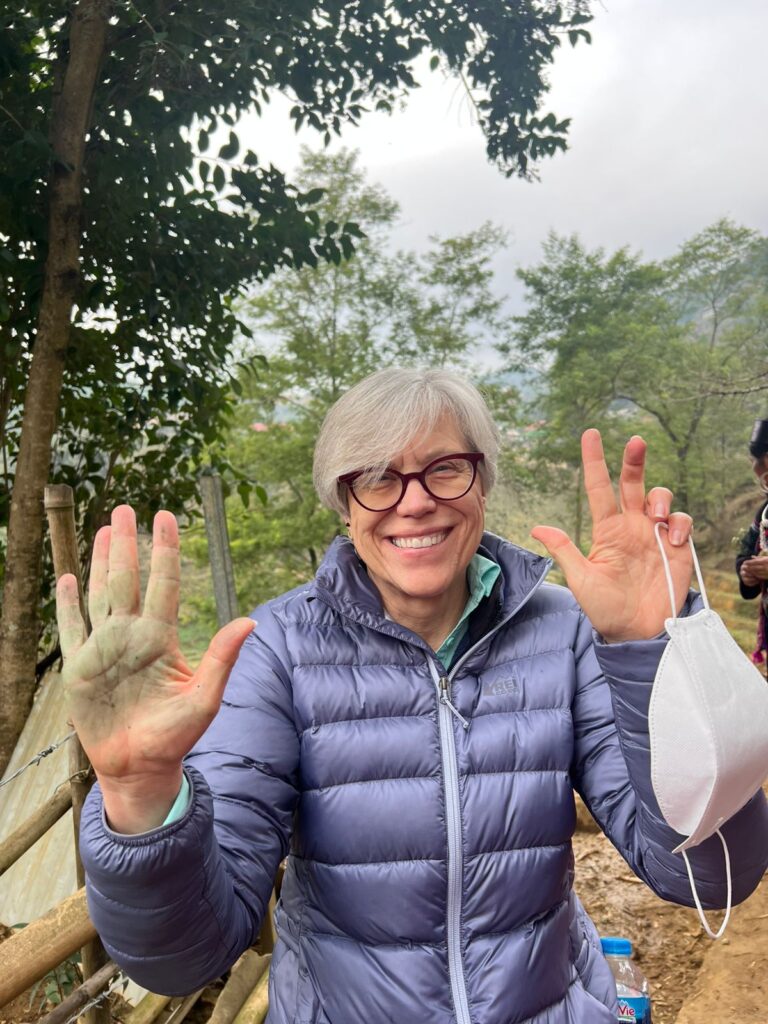
In the hills here they have one rice harvest per year. They will start planting about the lunar new year or Tet which is on January 29. They flood the rice paddies several weeks before they plant the rice to get the soil fully saturated. Then they spread the seed. They have to replant the seedlings when they are about 4 inches to get the proper spacing. They cut off the top of the plants to harvest the rice and use a machine to separated the rice from the chaff. Here are some pictures from our walk.
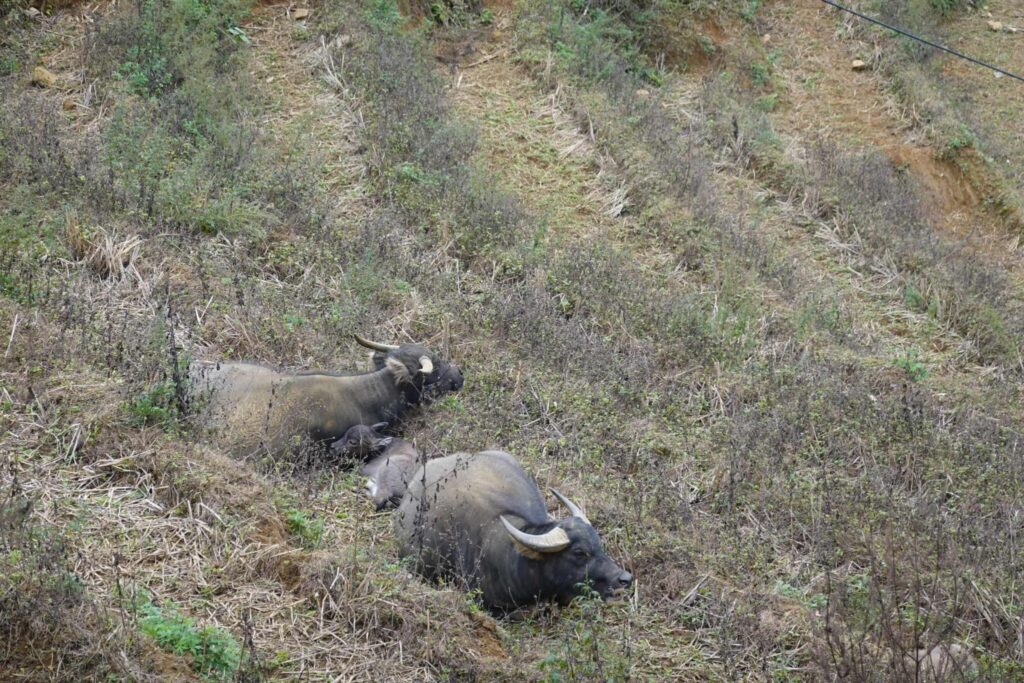
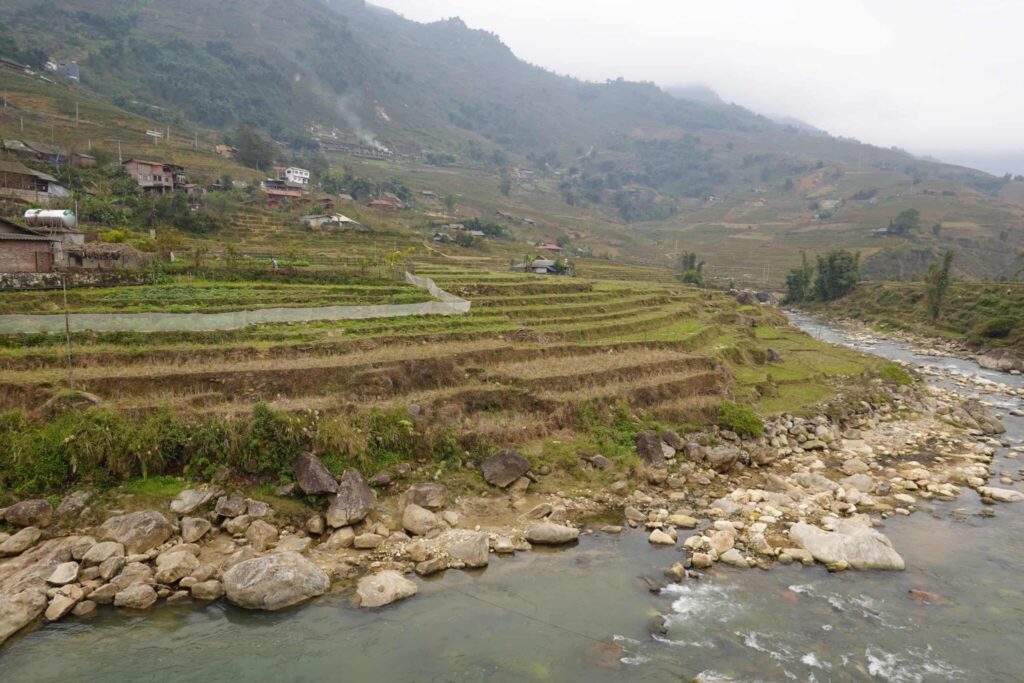
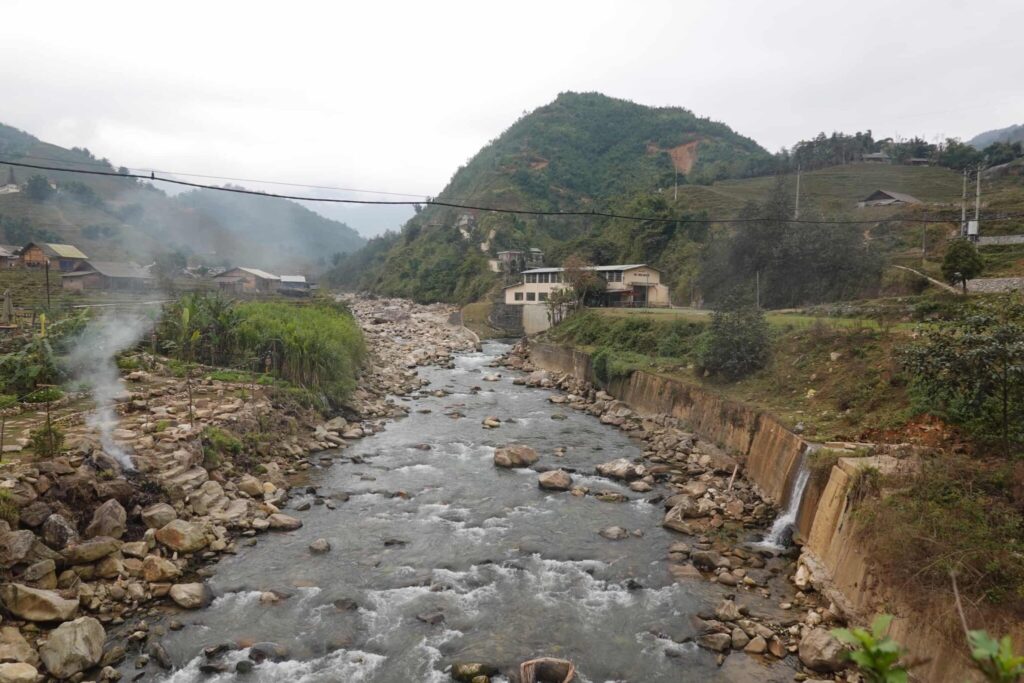
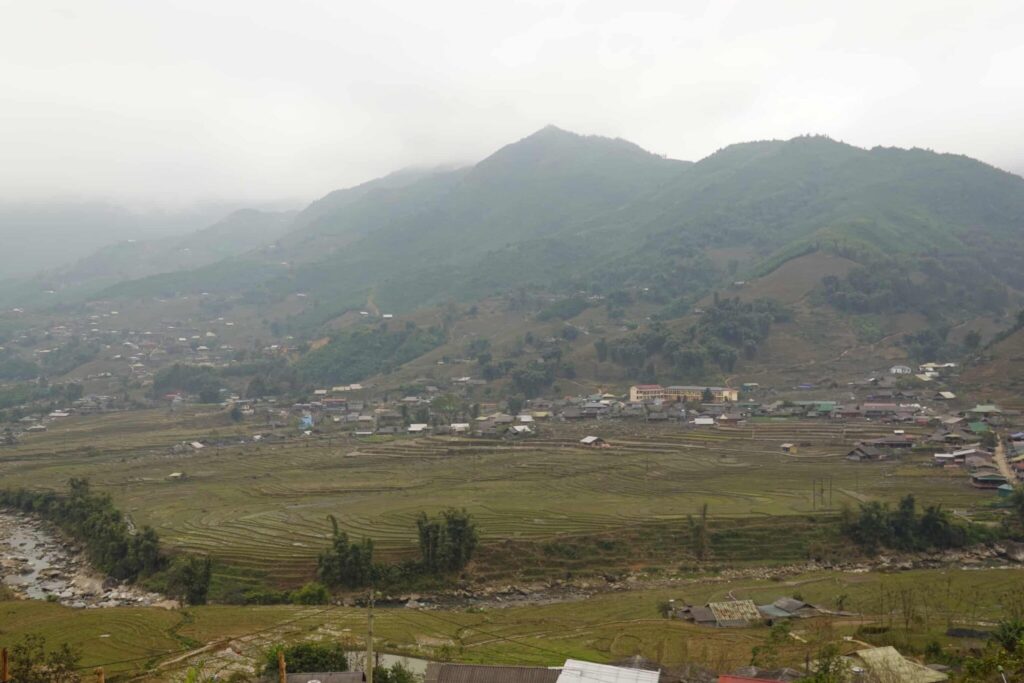
We stopped at a coffee shop for some tea made from lemongrass, ginger, and honey. It was very tasty. After our tea, our Hmong friends got their handicrafts out for some shopping but Rick and I didn’t buy anything.
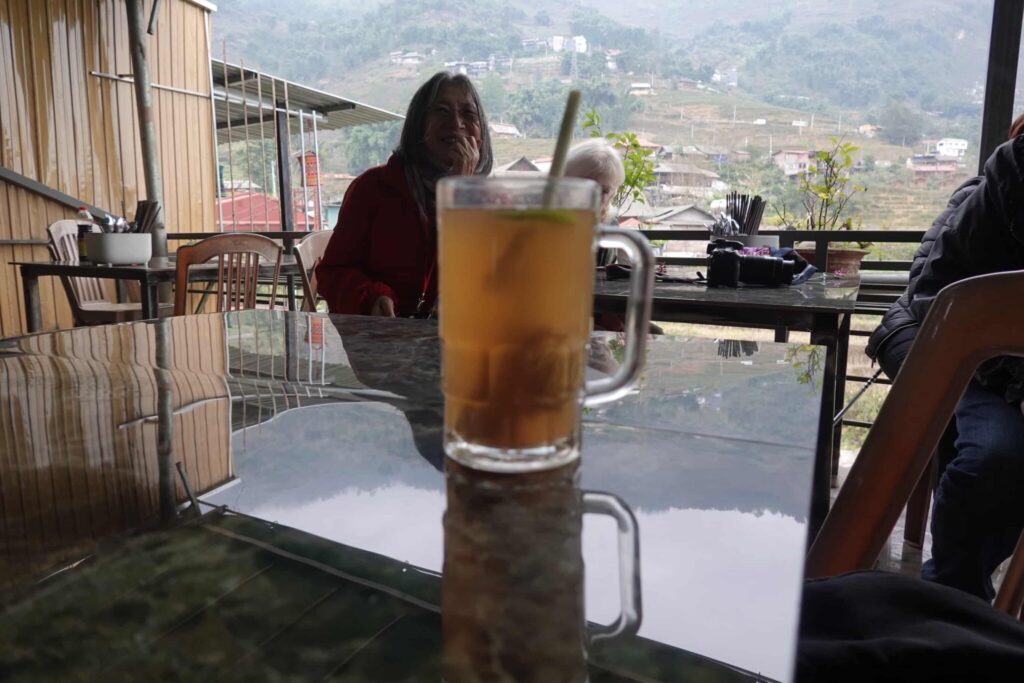
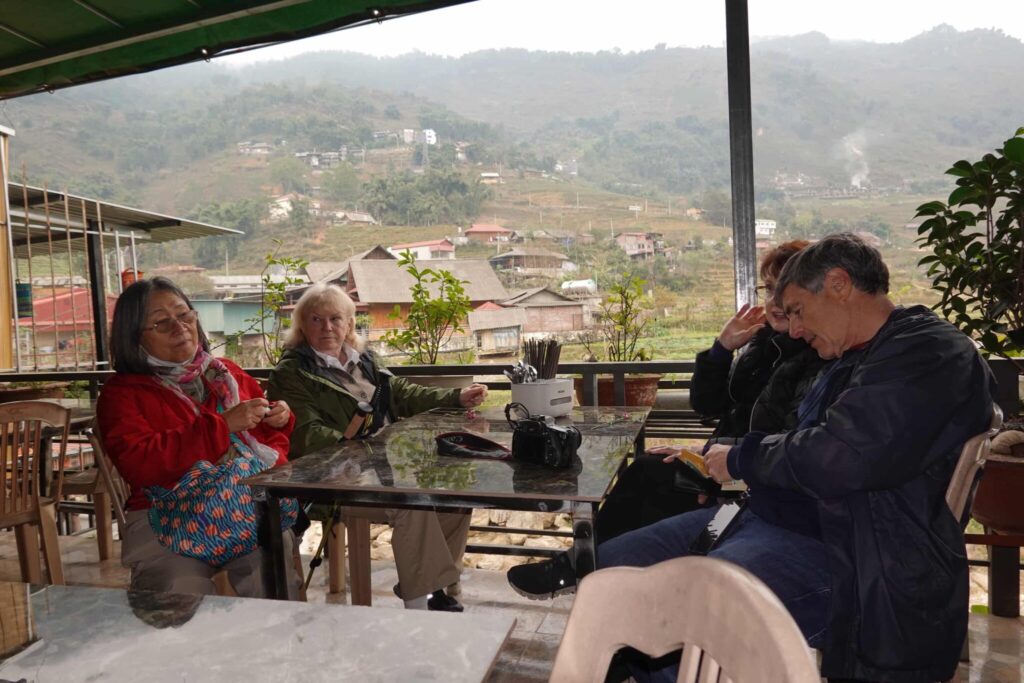
Next we went to a Hmong house which looked similar to the other houses we have visited.
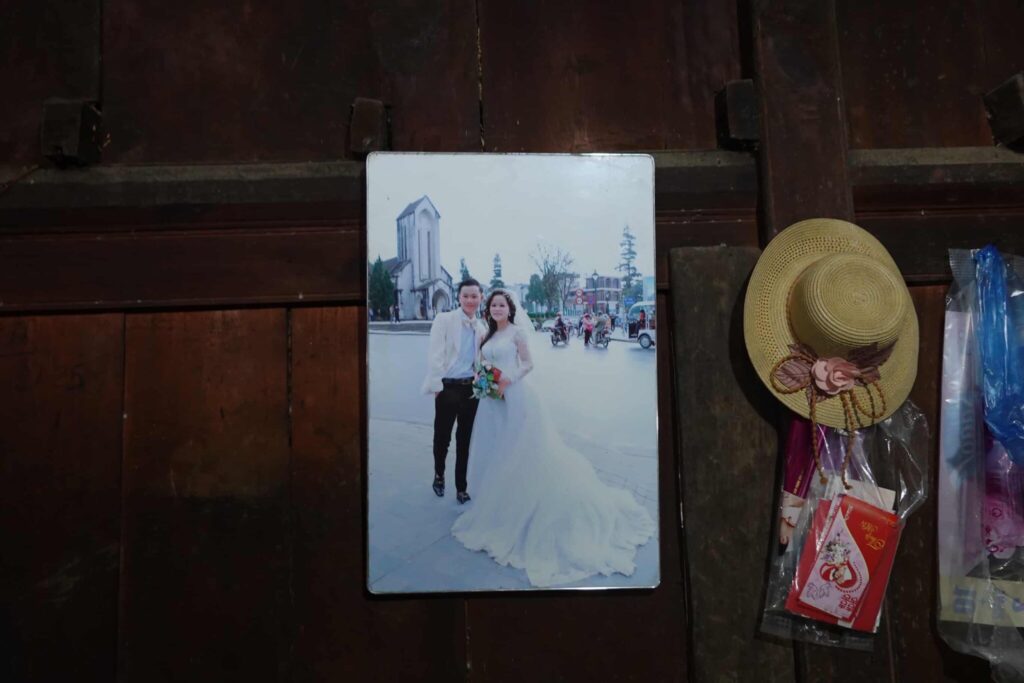
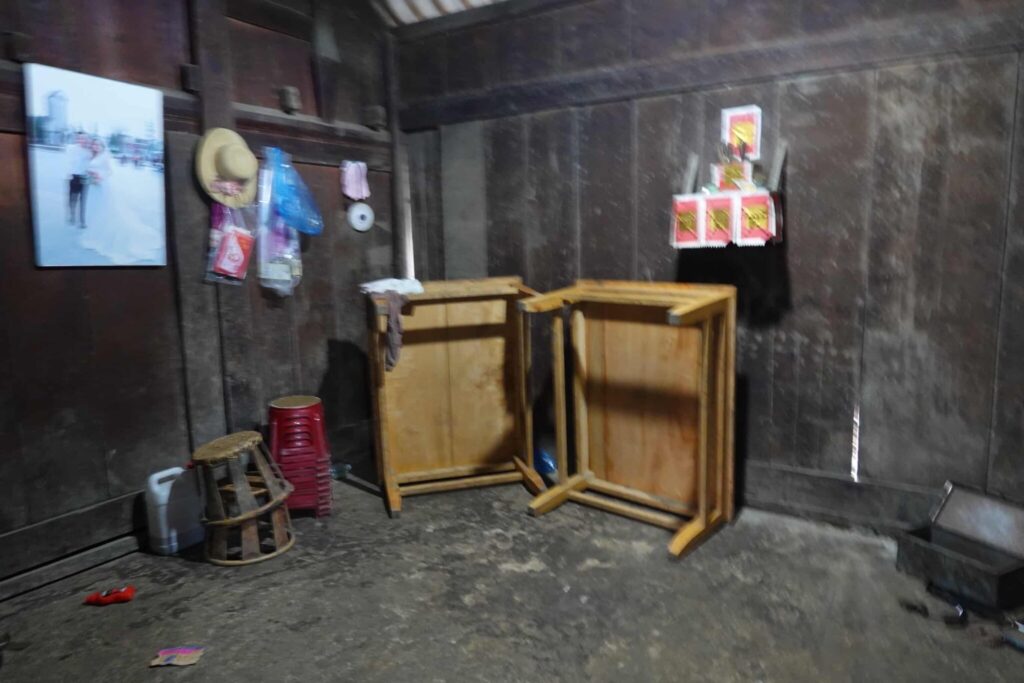
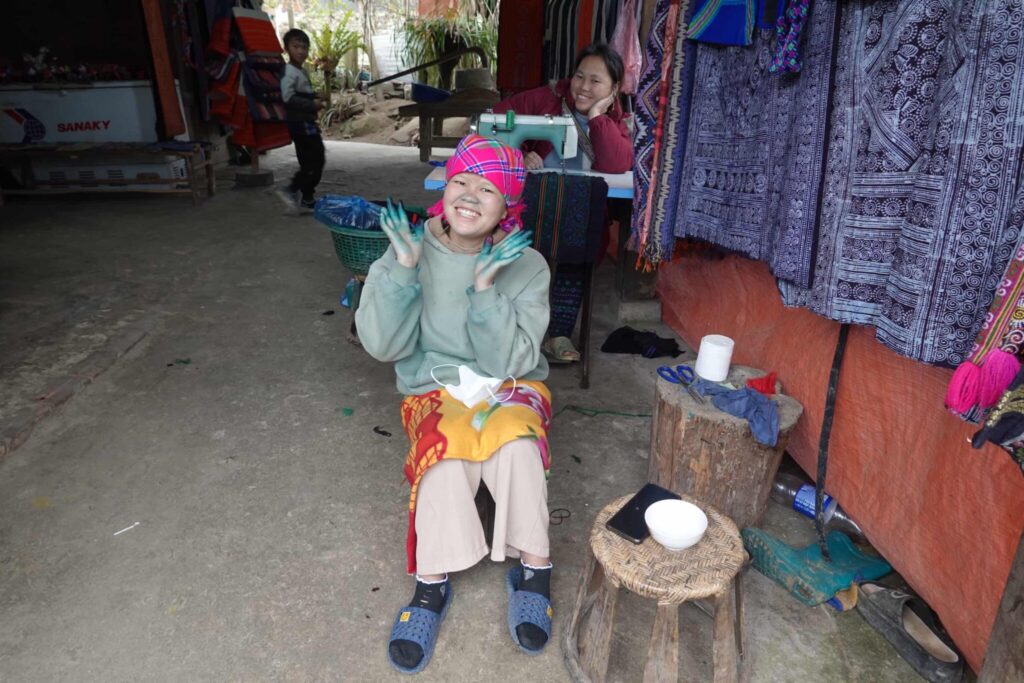
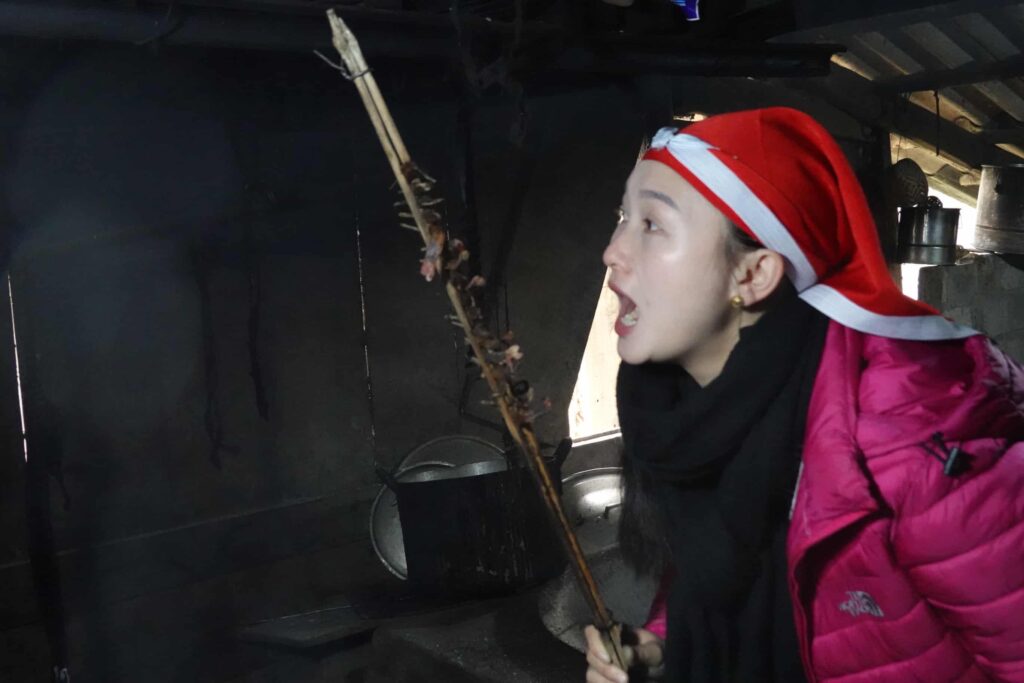
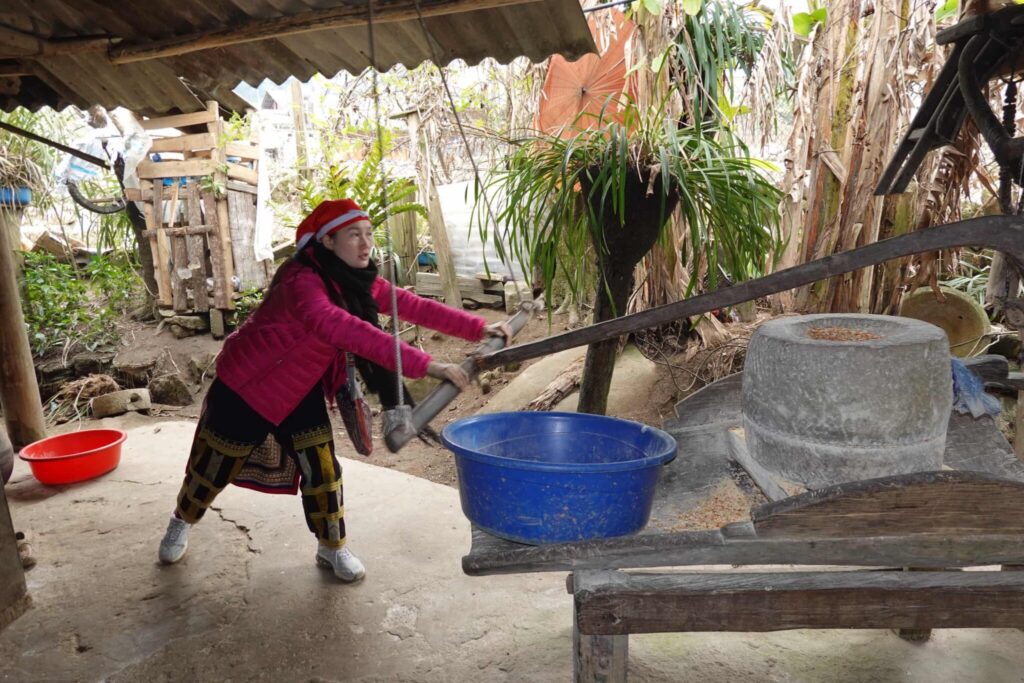
Finally we went to the house of a family that made incense out of cardamom, cinnamon, and star anise. They make a mixture of these three spices put it in a mold and voila incense. Here’s a picture of Mai Linh showing us the cardamom and you can see all the incense drying.
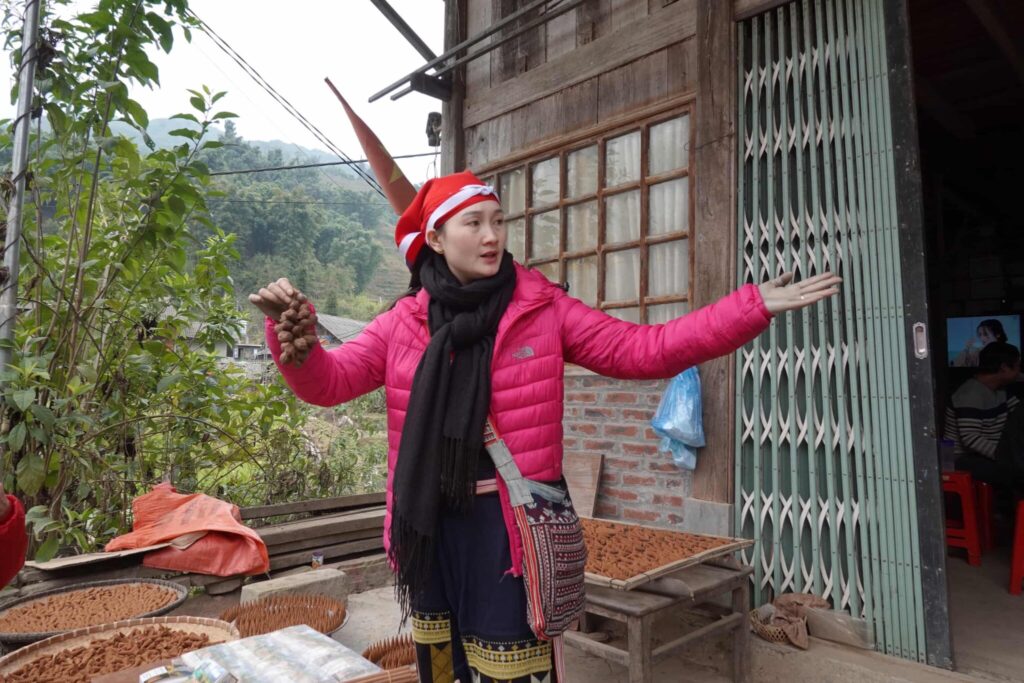
We had lunch in Ta Van village and then came back to the hotel. Rick went on an orientation walk of the town and I had a massage.
That evening Rick went with the group to a hot pot restaurant where he cooked salmon and sturgeon in a hot pot. He said it was delicious. I stayed back because although I’m feeling somewhat better, a little extra rest will do me good.
